Climate, Peace and Security Assessment: Papua New Guinea

Read the full report here.
As one of the world’s most ecologically and culturally diverse nations, home to over 800 languages and remarkable traditions that have evolved alongside abundant natural resources for millennia, PNG’s communities are deeply connected to their natural environments including forests, land and sea. This interdependence makes them particularly vulnerable to climate- and environment-related shocks such as sea-level rise, precipitation unpredictability and land degradation.
The Climate, Peace and Security Assessment, led by adelphi in partnership with ADB and UNDP, reveals that climate change is not simply an environmental challenge, but a force that is reshaping the landscape of conflict, vulnerability and development across the country. The assessment identifies six interconnected pathways through which climate and environmental changes amplify security risks in PNG. The assessment also spotlights three case studies where regional dynamics and lessons are drawn. Then, the assessment offers eight priority recommendation areas for integrated solutions.
Key insights include:
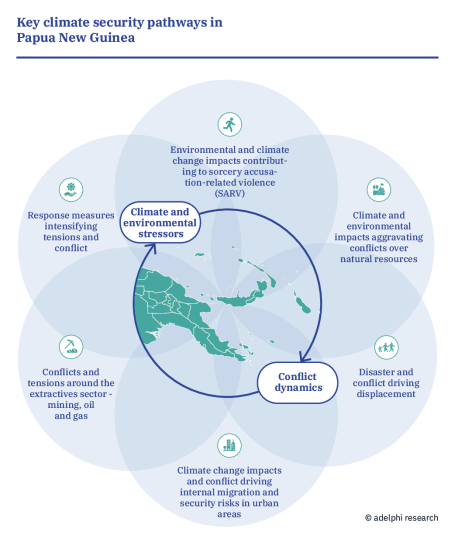
- Pathway 1: Environmental and climate change impacts contributing to sorcery accusation-related violence (SARV)
-
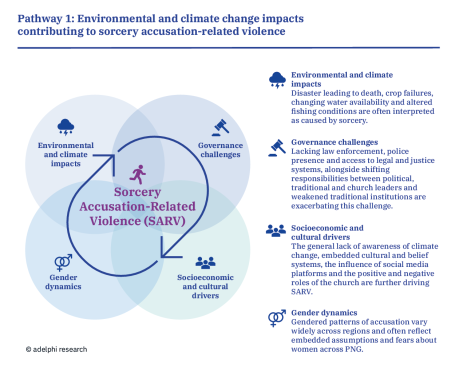
- Pathway 2: Climate and environmental impacts aggravating conflicts over natural resources
-
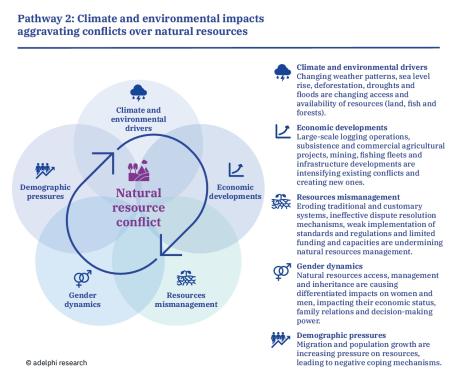
- Pathway 3: Disaster and conflict driving displacement
-
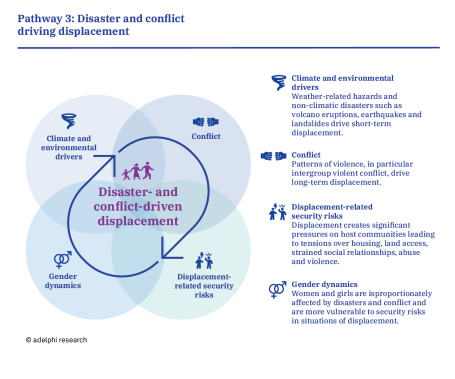
- Pathway 4: Climate change impacts and conflict driving internal migration and security risks in urban areas
-
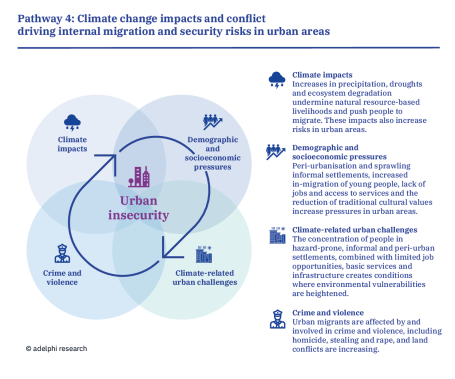
- Pathway 5: Conflicts and tensions around the extractive sector – mining, oil and gas
-
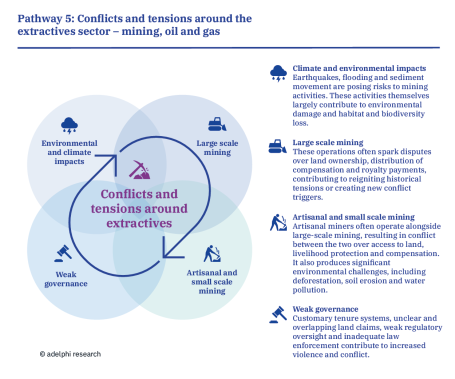
- Pathway 6: Response measures intensifying tensions and conflicts
-
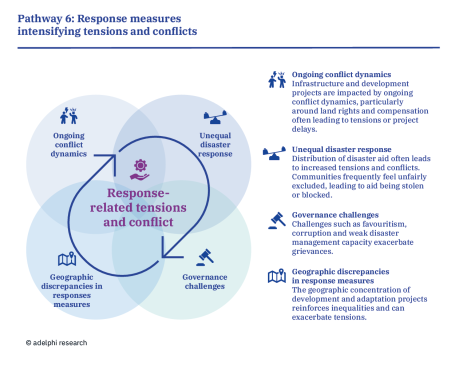
Case Studies: Regional Dynamics and Lessons
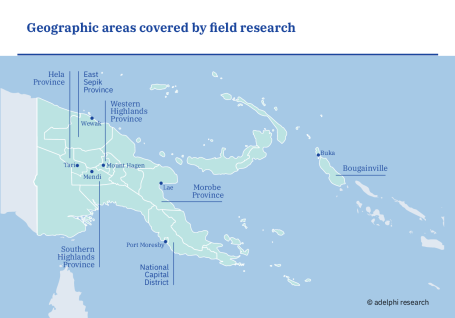
- Hela and Southern Highlands Province (SHP)
-

- Bougainville
-
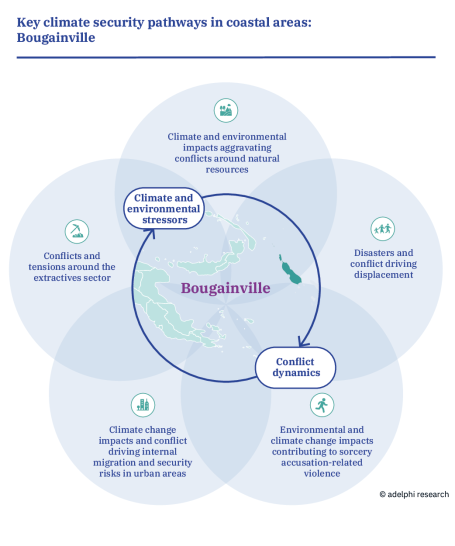
- Port Moresby and Lae
-
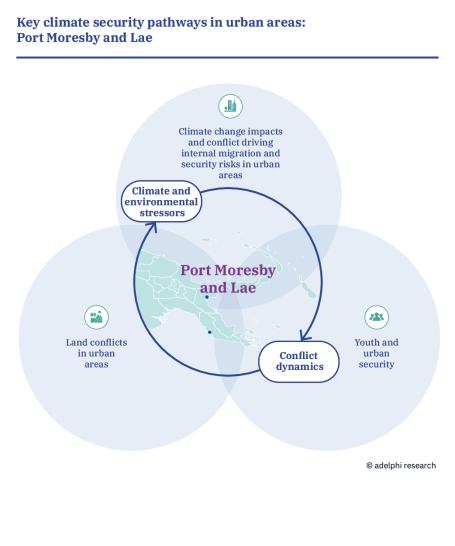
Recomendations
Breaking the Cycle: Integrated Solutions
- Integrate peacebuilding, climate adaptation and development
- Enhance youth engagement and alternative livelihoods
- Address sorcery accusation-related violence (SARV)
- Strengthen disaster risk management and displacement response
- Improve sustainable natural resource management
- Improve governance, law enforcement and data systems
- Enhance data collection and analysis for evidence-based interventions
Share on

